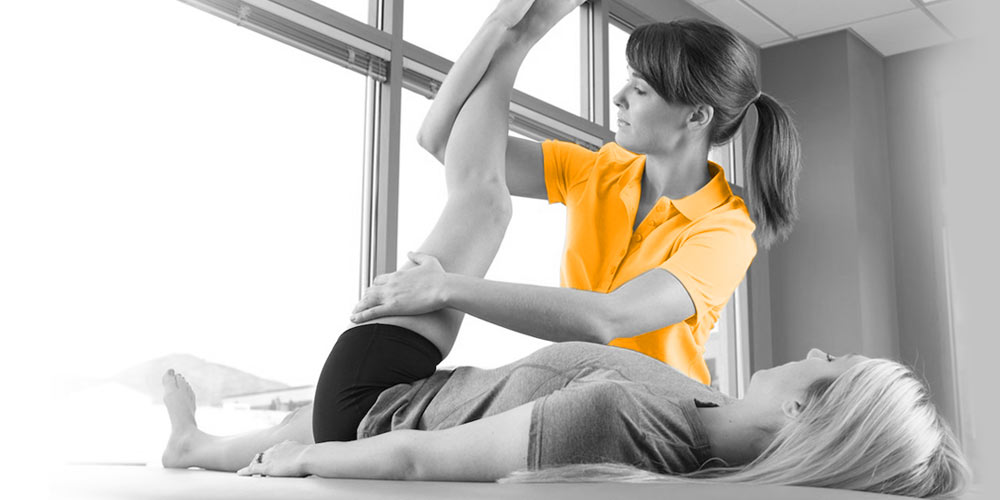Your cervical spine (c-spine) is classified as your top seven vertebrae (or more commonly, your neck). Here at TM Physio we think your spine is pretty important. Not only does it house the spinal cord, which sends messages from your brain to your body (and back again), and important arteries that provide blood flow to the brain, but it is also strong and flexible, allowing movement in all directions.
Our neck also has its natural curves that flow on from the curves we have in our lower and upper back. These curves are important as it helps us evenly distribute force through our spine, while helping us move, twist and bend. When one of our curves start to change or move, or if we experience some kind of pain or injury, it can set off a chain of events in our body – literally from head to toe!
Given the cervical spine’s important function in the body of holding the head centred and straight, it can get a lot of stress. Not just stress like when we have been involved in a car accident or rugby tackle (a blog for another time), but daily repetitive stress, which just about everyone experiences on a day to day basis.
“So what is this daily stress that I’m giving myself?” you ask. It’s a multitude of activities and factors but sitting or standing in prolonged or unusual postures is a very common one. Do you:
- work at a desk?
- drive a car?
- use public transport?
- sit on the couch and watch TV?
- use your mobile phone, tablet or laptop?
- hold a baby in your arms, or feed a baby regularly?
If you answered yes to any of these, you’re likely to be experiencing stress to your c-spine, which could result in:
- forward head placement, putting extra strain through your spine and other parts of your body
- Muscular fatigue and weakness
- disc irritation
- headaches, including migraines
- nerve tingling or pain
- referral pain to other parts of your body such as the shoulder
- Potential to progress into more severe or persistent issues.
To give you an idea of how strain is caused, the human head weighs about 4.5-5.5kg. When it flexes forward 15 degrees, the force through the spine grows to about 12kg. At 30 degrees, it’s 18kg, and at 45 degrees flexion, our spine sees about 22kg. To deal with that, the spine and muscles around it start working harder to hold our head upright, without adequate rest, overtime this can cause fatigue and strain through our neck eventually leading to pain and discomfort.

How Do I Prevent Further Trauma?
- Notice your posture: Try to keep your shoulders back and your head above your shoulders. You can do some simple exercises like chin tucks. Basically, dance like you’re an Egyptian and retract your head backwards, so it’s sitting above your neck. Try not to give yourself too much of a double chin (don’t tilt your head down). Also try some stretches that open up your chest and elongate your neck.
- Shoulder retraction: Roll your shoulders back and down, then pull your shoulder blades together, like someone has put tape from one blade to the other.
- Check your workstation: You should be sitting with your elbows at right angles or just wider, your knees should be level with your hips, or slightly lower – prop your feet up onto a foot rest if you need. The top of your screen should be at eye level. Check out our graphic for more information.
- Take regular breaks when sitting: Simply stand up, do a couple of stretches or go for a quick walk. If your workplace has standing or walking desks available, (use them to break up prolonged postures.)
- Parents with babies: Be conscious of your posture. Try to relax your shoulders and use a pillow or support when feeding or holding bub for extended periods of time. If you have a baby that loves long cuddles, try baby-wearing (chest to chest) using a well-fitted carrier, rather than holding.
- Visit one of our experienced physiotherapists for treatment if you are experiencing any pain or discomfort. Your physiotherapist will be able to help identify any contributing factors and then work through a plan to meet your goals
Your cervical spine is important, so make sure you look after it! Think about your posture, get your Egyptian dance perfected and show off those beautiful (spinal) curves.
References:
1. Spine Health: https://www.spine-health.com/conditions/spine-anatomy/cervical-spine-anatomy-and-neck-pain
2. Assessment of Stresses in the Cervical Spine Caused by Posture and Position of the Head: https://motamem.org/wp-content/uploads/2016/06/spine-study.pdf


